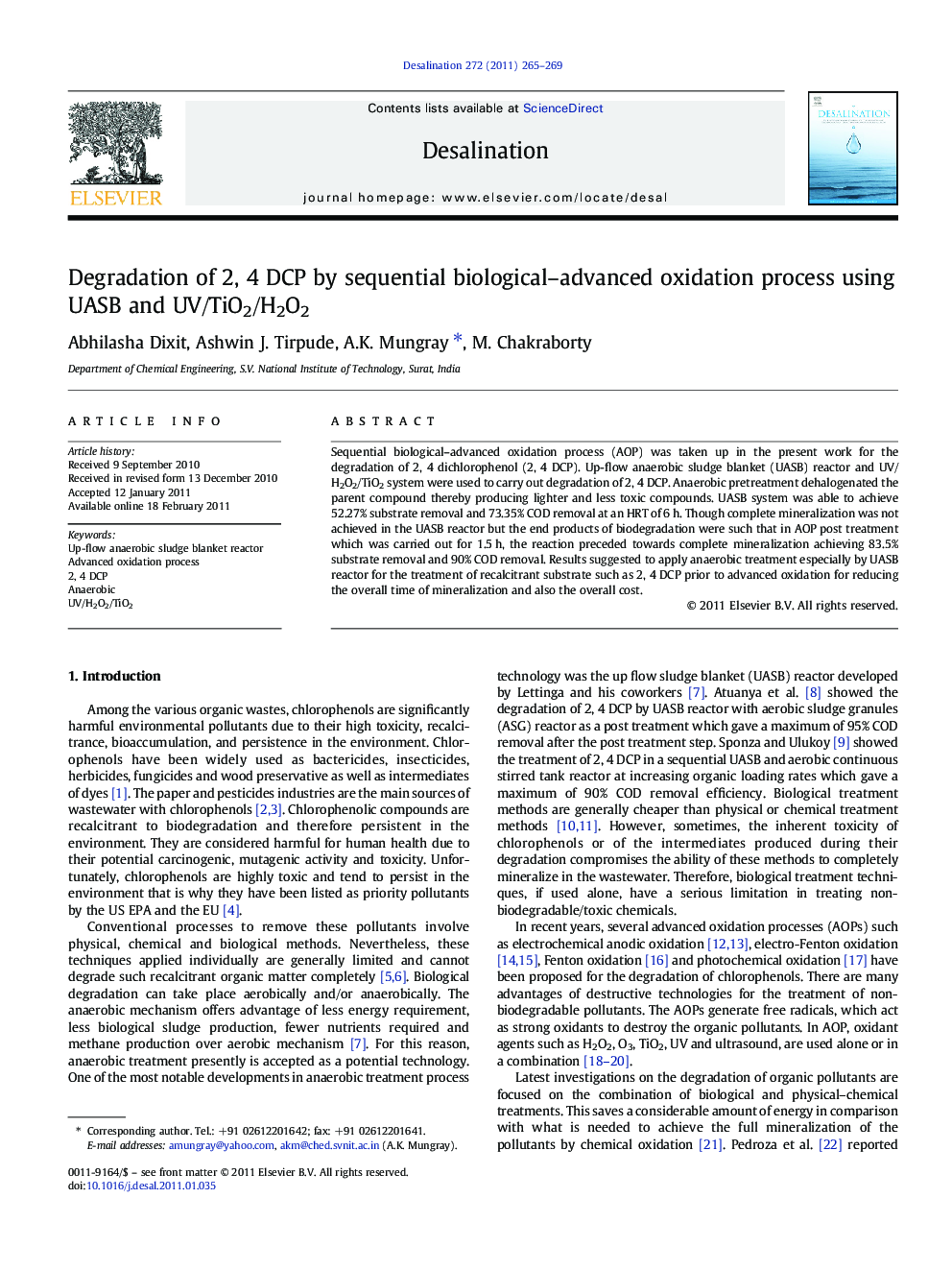| کد مقاله | کد نشریه | سال انتشار | مقاله انگلیسی | نسخه تمام متن |
|---|---|---|---|---|
| 625234 | 1455419 | 2011 | 5 صفحه PDF | دانلود رایگان |

Sequential biological–advanced oxidation process (AOP) was taken up in the present work for the degradation of 2, 4 dichlorophenol (2, 4 DCP). Up-flow anaerobic sludge blanket (UASB) reactor and UV/H2O2/TiO2 system were used to carry out degradation of 2, 4 DCP. Anaerobic pretreatment dehalogenated the parent compound thereby producing lighter and less toxic compounds. UASB system was able to achieve 52.27% substrate removal and 73.35% COD removal at an HRT of 6 h. Though complete mineralization was not achieved in the UASB reactor but the end products of biodegradation were such that in AOP post treatment which was carried out for 1.5 h, the reaction preceded towards complete mineralization achieving 83.5% substrate removal and 90% COD removal. Results suggested to apply anaerobic treatment especially by UASB reactor for the treatment of recalcitrant substrate such as 2, 4 DCP prior to advanced oxidation for reducing the overall time of mineralization and also the overall cost.
Research Highlights
► Sequential biological degradation–advanced oxidation process is evaluated.
► UASBR and UV/TiO2/H2O2 are novel and found efficient for 2, 4DCP and COD removal.
► Anaerobic pretreatment dehalogenated 2, 4DCP producing lighter and less toxic compounds.
► Effective for higher substrate concentration in lesser time compared to only AOP.
► Sequential system emerges out to be an energy efficient process.
Journal: Desalination - Volume 272, Issues 1–3, 3 May 2011, Pages 265–269